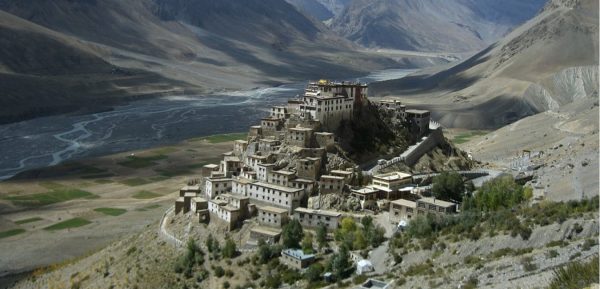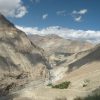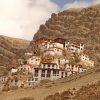The word “Spiti” means middle land i.e. the land in between Tibet and India. It’s a dry but inspirational attractive region which remains under snow for 8 months in a year in the powerful Himalayan mountain range. The zone was made reachable to tourism only in 1992 and is almost untouched by the modern world. Spiti offers a lot of moment to the adventurous tourists looking for outspan, walk, trekking, cycling, mountain climbing, bike rides etc. as well as calm travelers looking forward to relaxing in the unpolluted mountaintop of Himalayas.
Spiti trip starts visiting multiple locations like the ancient monasteries Dhankar, Lhalung and much more that are more than 1000 years old. Hunting of shooting stars in Pin Valley National Park and visiting the highest villages in Asia then meditate at Kye Monastery among the holy monks. Spiti offers romancing the snows, national parks bloom with exotic wildlife and much more!
Spiti region is predominantly Buddhist and the valley, culturally, is an expanded slice of Tibet. Even now an Inner Line Permit is needed for non-Indians — an official pain to get but at least it provides a good memento at the end of the stay. Spiti valley was the location of the scenery and movie theater in the Indian films Paap and Milarepa, a life story adventure tale about one of Buddhism’s most famous Tibetan saints. The Buddhist monastery in the dale served as the locus of the set and some of the monks arrive in the film. The Pin Valley of Spiti is home to the few outlive Buchen Lamas of the Nyingmapa sect of Buddhism. Spiti is summer house to hundreds of semi-nomadic Gaddi sheep and goat herders who come to this valley for grazing their animals from the neighboring villages and sometimes as far as 250 km. They enter the date during summer as the snow melts and leave just a few days before the first snowfall of the phase.
The commanding feature of Spiti valley is its Buddhist culture. The bare and rugged snow top mountains, thinly dispersed villages at long distances, beautiful blue sky & equally beautiful blue Spiti River are the main features of this outlying land. It is probably good that Spiti valley is so unreachable to a common tourist. Only a serious and spirited traveler must visit this out of world place.
The road connecting Spiti is frequently cut off in winters and spring due to heavy snowfall. The dale is likewise cut off from the north up to eight months of the year by heavy snowfall and thick icing conditions.Finally, there’s not a lot to do in Spiti if you don’t count coolness as something. You see beautiful places; get a lot of time to be on your own. Read a book, look at the surroundings, talk to friends, talk to the locals. Meet fellow traveler, share stories. Your travel would be frequent and taxing. So, be prepared to be very tired throughout the trip unless you take proper rest. Drink lots of water, it’ll help with adjustment. The originality of the scenery might fade off just a little bit, the adventure will not. Don’t go there with a tighter schedule. Go with some time on your hands.
WHY TO VISIT SPITI
- The landscape is fantastic. Looks like a painting.
- Height sickness is a real thing.
- Roads are hard sometimes horrible even.
- Food is slow but tasty.
- You’d be constantly surprised by how fit the locals are.
- There are bikers all around you and you share an authentic feeling of being in a group.
- The locals are amusing people.
- With time, the countryside becomes so common that you stop noticing it.
- Your plans will go faulty on account of unexpected changes in the road fitness.
- Many times, there will be no one around you for hours. Absolute loneliness.



Tour Reviews
There are no reviews yet.
Leave a Review